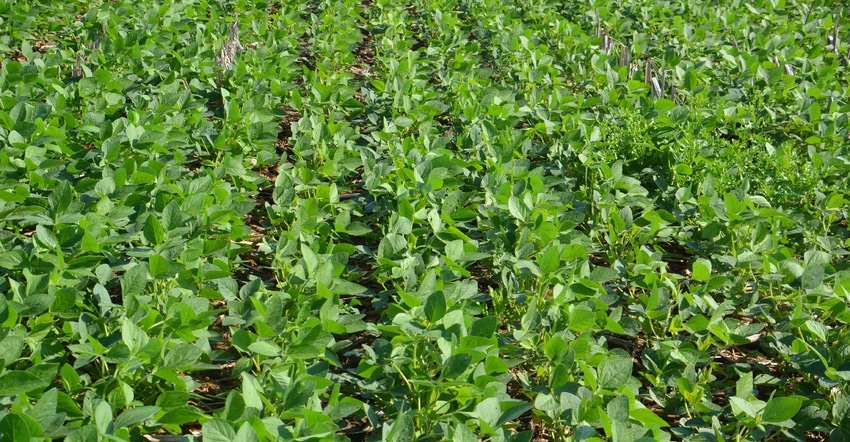
One brand alone, Asgrow, offers 47 varieties nationwide of new XtendFlex soybean varieties for commercial planting for 2021. How were these soybeans with the added glufosinate-tolerance trait developed? How could so many varieties be rolled out at once? What should you ask before planting these varieties you haven’t seen before?
To find out, Farm Progress went behind the scenes with Christie Wiebbecke, a plant breeder and North American soybean commercial development breeder at Bayer Crop Science for Asgrow, and Kirsten Thomas-Garriott, technical agronomist for Dekalb Asgrow in central Indiana.
A closer look
FP: How was the glufosinate trait added to Xtend soybeans with tolerance to glyphosate and dicamba?
Wiebbecke: We’ve worked with Asgrow Xtend soybeans for a long time and have lots of elite germplasm in our pipeline. By licensing, we worked with the glufosinate trait. Obtaining regulatory approval is a long process, so we have lots of experience with these varieties, even though this is the commercial launch year.
To create Asgrow XtendFlex varieties, we take elite germplasm with Xtend traits and pair them with elite germplasm with the glufosinate trait. Once we have lines with all three herbicide tolerances, we utilize our elite germplasm pool to develop varieties with other agronomic traits suited to various geographic areas.
How can one company release so many varieties so quickly?
Wiebbecke: As already noted, we’ve been developing these for a long time. There was adequate supply available to launch varieties a year ago, but we didn’t get approval in time. Instead, some farmers got experience growing Asgrow XtendFlex beans under stewardship programs, since there weren’t yet market approvals for soybeans with the trait in the spring of 2020. However, the delay also gave us time to continue our breeding and further evaluate varieties considered for release. That’s why the 2021 class is even stronger.
How do growers know these varieties will have good yield potential?
Thomas-Garriott: The best predictor of future yield is past yield. As Christie noted, we have lots of experience and reams of data on these varieties. Myself and my counterparts across the country have worked closely with the breeding team to make sure varieties released for your area have good yield potential, along with a complete package of agronomic and defensive traits suited to your location.
How can a grower become familiar with brand-new varieties?
Thomas-Garriott: The grower can sit down with their seed rep and rely on their knowledge about varieties he or she should consider. Even if you have fields or parts of fields where soybeans have struggled to produce top yields before, seed reps can help identify potential yield-limiting factors and match up varieties which fit those areas. If you can make improvements in those areas, you can make more money overall.
What questions should the grower ask when looking at planting new varieties?
Wiebbecke: First determine what you need. What are your goals in picking a variety? Is it weed control, or protection from what your neighbors spray? That’s where having glufosinate coupled with glyphosate and dicamba tolerance adds flexibility. Is it yield potential? As Kirsten noted, we can provide yield data.
What are the needs on your farm? Do you need soybean cyst nematode and sudden death syndrome protection? We know the traits of each variety, and we can find a variety which best matches your geography and your needs.
About the Author(s)
You May Also Like




